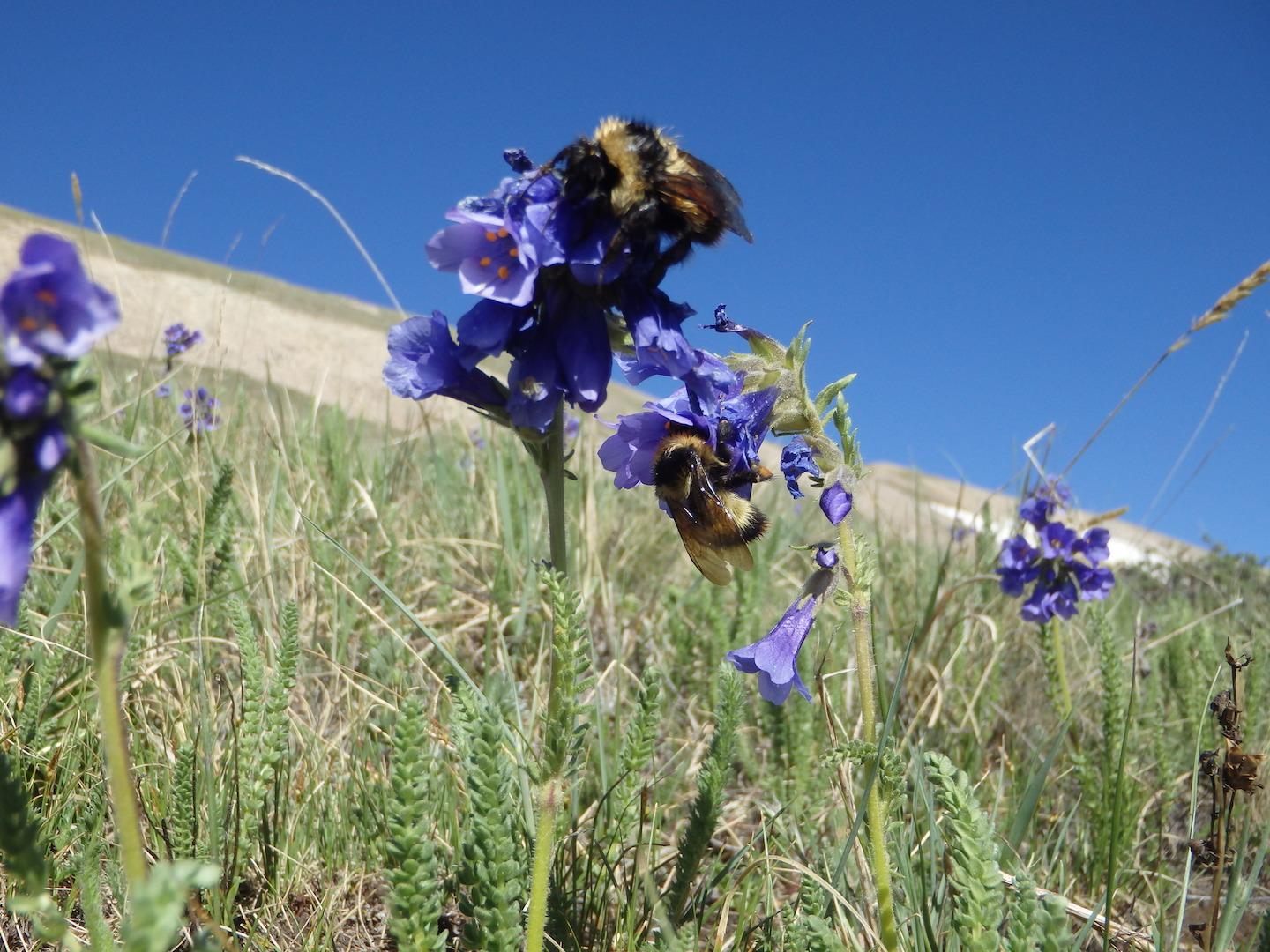Tracking Bumblebees Based on Their Buzzes
The technique could be a boon for famers who rely on the services of pollinators.

Pollinators are big business—farmers in the United States spend about $656 million every year to rent bees to pollinate crops such as clover and almonds. But once those hives are set out on the edge of a field, farmers have no way of knowing—short of sitting in the field and watching the bees at work—whether they’re getting their money’s worth. With pollinator populations on the decline, it’s more important than ever to know what they’re up to. Researchers have finally come up with an ingenious solution for tracking these tiny farm hands: listening to them.
In a lab, a team of scientists from Missouri documented the distinctive buzzes made by two bumblebee species. They then set up iPad minis and microphones in three meadows in Colorado to listen for those signature buzzes to track pollinator activity. They compared their results to visual counts and photographs, and published their results in the journal PLoS One.
“Eavesdropping on the acoustic signatures of bee flights tells the story of bee activity and pollination services,” said Candace Galen, a biologist at the University of Missouri and coauthor of the report, in a press release. An algorithm developed by Galen’s team was used to analyze the field recordings and determine the number of bees in a field, whether the bumblebees had actually pollinated plants, and which plants are likely to eventually develop fruit. For farmers that rely on pollinators, such data can help them plan for crop surpluses or shortages, and find out the most effective pollinator species to rent or attract for certain crops.
















Follow us on Twitter to get the latest on the world's hidden wonders.
Like us on Facebook to get the latest on the world's hidden wonders.
Follow us on Twitter Like us on Facebook